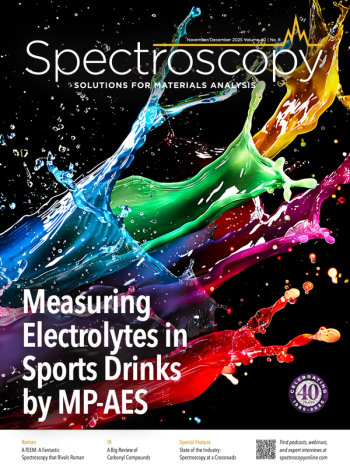
Inside the Laboratory: The Weker Group at SLAC National Accelerator Laboratory, Part IV
In this edition of “Inside the Laboratory,” Johanna Nelson Weker of SLAC National Accelerator Laboratory discusses her laboratory’s work in battery analysis. In the final part of our interview, Weker continues our discussion of battery cell geometries and why computed laminography is a good technique to use for this purpose.
"Inside the Laboratory" is a joint series with LCGC and Spectroscopy, profiling analytical scientists and their research groups at universities all over the world. This series spotlights the current chromatographic and spectroscopic research their groups are conducting, and the importance of their research in analytical chemistry and specific industries. In this edition of “Inside the Laboratory,” Johanna Nelson Weker of SLAC National Accelerator Laboratory discusses her laboratory’s work in battery analysis (1,2).
In Part 3, Weker discusses battery cell geometry configurations and how they inform battery design. In Part 4, Weker continues our discussion of battery cell geometries and why computed laminography is a good technique to use for this purpose.
Will Wetzel: What makes multiscale computed laminography good for studying battery geometries?
Johanna Nelson Weker: Computed laminography is similar to computed tomography (CT). It is a way to do three-dimensional (3D) imaging. It is not specific to X-rays. It is just a means of imaging in 3D. The reason people use tomography more frequently is because it results in better image quality, assuming that your sample sits entirely inside the beam, inside the field of view, and you can rotate it, which doesn't change its thickness much. An ideal geometry would be, for example, a cylinder. A cylinder, as you rotate it like a pen, does not change its thickness as you rotate it. You can take images at different angles, and those projection images are put into a computer algorithm and reconstructed into a 3D volume. So essentially, you're going from a two-dimensional (2D) image to a 3D volume. We don't tend to move our X-ray source and our detector like you would in a medical setting, because we don't care about our sample, and our building is the X-ray source, so we tend to move our sample rather than move our source and detector.
The problem comes when you have a sample that's not a nice cylinder. A flat sample, for example, is these battery pouch cells. If you have an extended sample, as you rotate it, you become very thick at 90 degrees. At zero degrees, your thickness is pretty thin, but as you rotate it 90 degrees, it becomes so thick that you probably can't even get X-rays through it.
Laminography avoids that problem by taking the tilt angle that you're rotating your sample. Instead of rotating it around, you tilt your sample and rotate it at essentially 30 degrees from the beam. Now the thickness of your sample in your beam is staying constant, and you're able to get lots of different angles.
This is something that has already been developed. It's a technique that people use, but it's not frequently used, and that's often the case because there are more artifacts, more false things that are in the final image than if you used standard computed tomography. However, that's assuming that your sample is perfect. If your sample is flat, you have more artifacts by using tomography because you have all this missing information at 90 degrees and near 90 degrees, so you know nothing about your sample at those angles. We are implementing laminography both on the micron scale as well as the nano scale, with about 50 nanometer resolution. We are going to focus first on pouch cell batteries but extend that also to the other materials we're looking at. And really, there's a large variety of materials beyond what my group works on that could benefit, because they're naturally flat and extended. That's going to be a great thing that we're developing right now over the next few years.
This interview segment is the final part of our four-part interview with Weker.
References
- SLAC – National Accelerator Laboratory, About Us. Stanford.edu. Available at:
https://www6.slac.stanford.edu/about/our-story (accessed 2025-04-25). - SLAC – Stanford Battery Center, Johanna Weker. SLAC.Stanford.edu. Available at:
https://batterycenter.slac.stanford.edu/person/johanna-weker (accessed 2025-04-25).
Newsletter
Get essential updates on the latest spectroscopy technologies, regulatory standards, and best practices—subscribe today to Spectroscopy.


